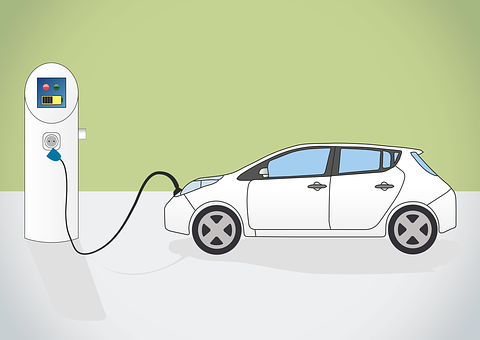This article deals with the impact of Electric Vehicles and Textile Industry in India. Electric vehicles have entered every segment and business in our country. The textile industry is one such sector. In the textile industry, the need for transportation is from the procurement of raw materials to the delivery of the final product.
Till now, conventional combustion engine vehicles were being used. These vehicles contribute to a lot of greenhouse gas emissions as well as carbon dioxide into the atmosphere. People are becoming more and more aware of the environment and the increase in oil prices. For both the problems stated above, electric vehicles came as the best solution.
The Present Condition
With the growth in demand for textile products all over the world, global textile production has increased rapidly in recent years. According to market experts, global textile production will grow at approximately 6.5% year on year. The industry’s structural change can be seen clearly in India. The Indian economy is growing and is directly affecting the textile industry. In India, the textile industry’s business model is mainly dependent on export.
We are the second largest textile manufacturer and exporter in the world. We are one of the top producers of yarn and fabrics and the second-highest cotton producer after China. In India, there are more than 3500 composite mills. The supply chain management for the textile industry is very well managed. India has emerged as a significant player in this sector with vast economies of scale, a low-cost labor force, and sufficiency in raw materials.

Growth in Demand and Carbon Emission
Being one of the most important industries in India, the textile industry is subject to severe ecological and social problems. There are different kinds of social-ecological and environmental pollution problems associated with this industry. The major environmental problem that this industry causes is water body pollution and carbon emissions. These two problems are mainly caused by the discharge of untreated effluents. The cloth in the textile industry passes through various processes before the final product is ready. These processes include sizing, bleaching, dying, printing, finishing, and other processes.
During all these processes, lots and lots of chemicals are used on the fabric. These chemicals cause environmental problems because they are not adequately treated before their final disposal. A lot of air pollution is also caused during all the processes. A lot of dust, cotton inks, and other micro-particles are released into the air which degrades the air and the environment. Due to these reasons, the textile industry is one of the most heavily polluting industries in India.
Other Sources of Pollution from the Textile Industry
Apart from the above-mentioned processes that create pollution, there are other aspects of the textile industry. One most important aspects of any industry is the transportation of raw materials as well as the finished product. In the textile industry also, there is a requirement for a lot of raw materials. After being processed, the final products also need to be transported from one place to another. All this transportation till now was done using conventional combustion engine vehicles.
These vehicles use conventional fuels such as petrol and diesel and cause a lot of pollution. Since the entry of electric vehicles, the load of all transportation activities has been shifted towards electric vehicles. These electric vehicles have almost no tailpipe emission. They only emit a very less amount of water vapor in the environment. So, for all the activities in the textile industry, electric vehicles are the best option.
Benefits of Electric Vehicles for the Textile Industry
- No Noise Pollution – These electric vehicles function silently. They do not have an engine which means no noise. Some electric vehicles are so silent that the manufacturers add some false sounds. They do this in order to make them safe for pedestrians.
- Low Maintenance Cost – The maintenance cost of electric vehicles is much lower than any other vehicle. One most important reason is that it doesn’t have many moving parts which lower its running cost.
- Low Running Cost -There are numerous reasons for EV adoption. Still, the most important reason is the running cost of an electric vehicle is much lower than that of traditional vehicles or equivalent petrol or diesel vehicles. They use electricity to charge their batteries instead of using non-renewable fossil fuels like petrol or diesel. Electric vehicles combined with electricity cost is cheaper than petrol or diesel vehicle. They are also using renewable energy resources which means it is more eco-friendly.
- Tax and Financial Benefits – There are lots of tax and financial benefits attached to an electric vehicle. This is always more than any petrol or diesel vehicle. The government provides a lot of incentives and subsidies for these vehicles making them affordable for the common people.
Two-Way Benefits for Textile Industry and Electric Vehicles
Electric vehicles and the textile industry can work hand in hand together. They can have a positive effect on both of them. Electric vehicles can be used in different textile industries to reduce pollution levels and emissions in the environment. In another way, lighter and more advanced textiles can be used in the latest electric vehicles to reduce weight, increase comfort and add some extra features.

Conclusion
So, at last, we can say that textile industries and electric vehicles can go hand and hand. The integration of these two will have multi-dimension benefits for both of them. The textile industry is a significant contributor to atmospheric pollution nowadays. The Indian government, auto manufacturers, researchers, and scientists are working very hard to include electric vehicles in the existing fleets. Textile industry owners are also working to make their fleets fully green in the coming few years. Working together, we will be able to achieve our target of net zero and will be able to create the best electric vehicle ecosystem in the world.

